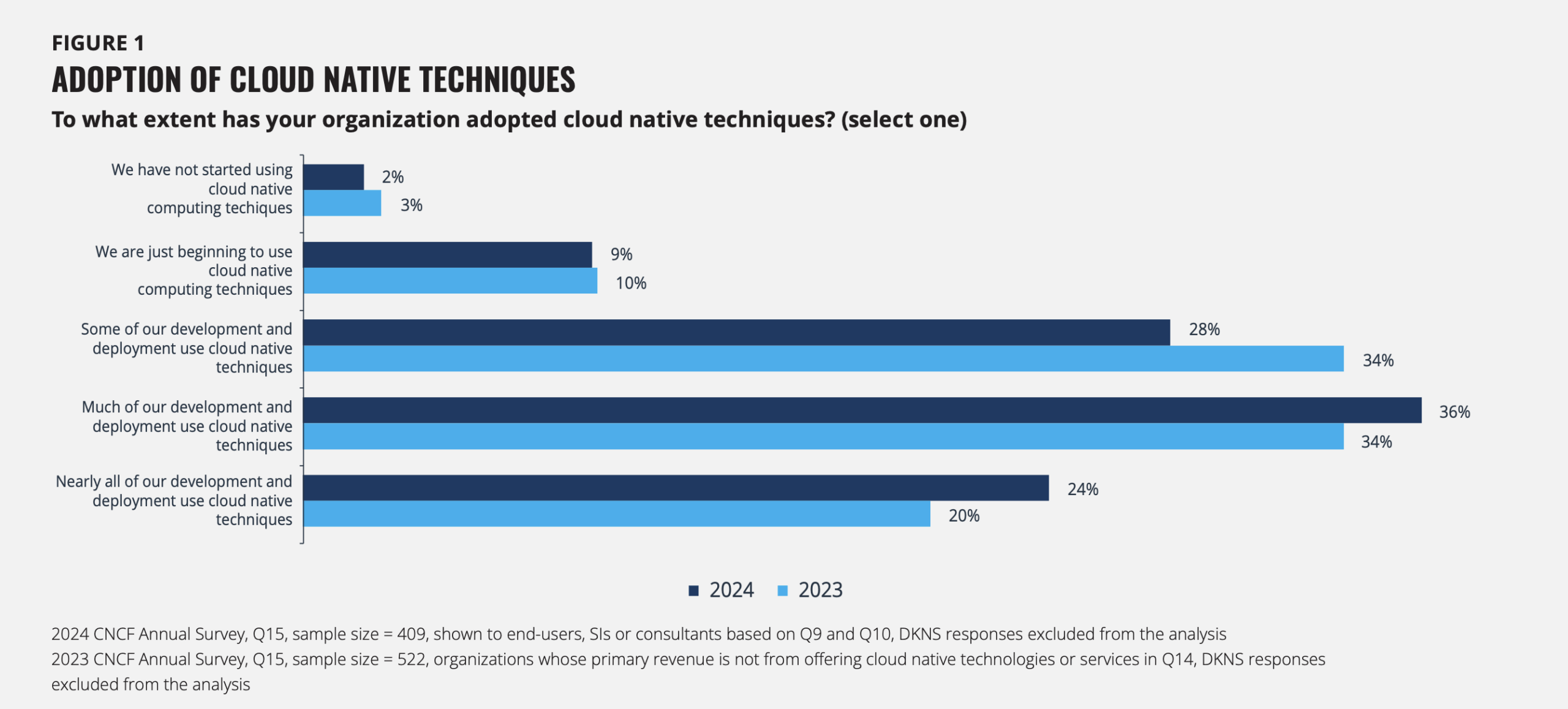
Enterprise application development involves the creation of custom software applications tailored to meet the specific needs and strategic objectives of an enterprise. Unlike off-the-shelf software or SaaS, enterprise applications can be customized and deeply integrated into the operations and workflows of the business.
From AI-powered process automation to personalized customer experiences, enterprise application development is quickly becoming a major differentiator for organizations focused on digital transformation. The global market for enterprise application development is expected to reach $334 billion this year and will reach $762 billion by 2034.
Custom application development has more viability and potential now thanks to innovations in architecture, automation, and AI. These technologies enable faster delivery, more resilient systems, and smarter applications that can deliver greater business value.
What is enterprise application development? Why is custom software development important for enterprises?
Enterprises deciding whether to develop custom applications need to understand the benefits, key trends driving the current growth of enterprise software, and best practices for a successful development project.
How is Enterprise Application Development Different from Other Options?
Enterprise application development differs from other options in terms of complexity, scalability, and strategic alignment. Enterprise apps need to integrate with legacy systems, cloud infrastructure, and third-party services. This level of integration and customization usually requires extensive planning and specialized expertise. Scalability is also a major concern as enterprise applications need to be able to handle high volumes of users, transactions, and data while remaining consistent and secure.
Benefits of Enterprise Application Development
The benefits of enterprise application development have become more and more clear as more enterprises opt for custom solutions to their organization’s problems. According to KPMG, 63% of enterprises saw improved performance from their digital transformation initiatives in the past two years.
Strategic benefits of custom enterprise applications include:
- Custom Workflows: Developing custom software allows for applications to be tailored specifically to your enterprise goals and your existing applications and workflows, improving adoption and ROI.
- Guide Future Development: Even if a third-party application fits your current goals and software demands, there is no guarantee it will still be a perfect fit 5-10 years down the road. Custom enterprise applications allow you to guide development and extend the way you want, so the solution continues to serve your evolving needs.
- No Vendor Lock-In: Tying a third-party tool to crucial workflows and systems means you may end up overly reliant on a specific vendor. Vendor lock-in can result in rising costs that you are unable to avoid and may prevent you from growing or adopting new technology in the future.
To achieve these benefits, enterprises are adopting outcome-based software development strategies that focus on impact over features and specific technologies.
Enterprise Application Development Best Practices
The benefits of enterprise application development are clear and companies are investing heavily. Global IT spending is expected to increase 9.8% compared to last year, rising to $5.61 trillion.
But is your organization prepared to take advantage? Here are several best practices to follow to see the most success.
Prepare Your Existing Infrastructure
Data and infrastructure are two major limiting factors for enterprise application development. This is why data center systems spending is expected to reach $405 billion in 2025, a 23.2% increase from last year. Spending on AI-optimized servers alone will hit $202 billion.
A large part of this growing investment is related to AI infrastructure. Custom AI applications require greater infrastructure and data maturity to see success. At the same time, AI represents a massive opportunity to create more efficient data infrastructure.
As enterprises continue investing in scalable infrastructure and modern architectures, they’re laying the foundation for more ambitious application development in the future.
Cloud-Native Development
With 89% of enterprises adopting cloud-native practices in 2024, companies are leveraging containerization, microservices, and platforms like Kubernetes to build applications that are modular, portable, and scalable. This shift allows organizations to avoid vendor lock-in, improve system resilience, and accelerate deployment across multi-cloud and hybrid environments. It also enables dynamic scaling during usage spikes and simplifies updates without downtime.

Image credit: CNCF.
Cloud infrastructure is also a powerful resource for development and deployment. Cloud platforms provide instant access to computing resources, analytics tools, and pre-built AI models. AI cloud stacks can also reduce capital expenditures and offer flexibility to scale based on demand.
Start with a Small, Targeted Enterprise Application
Many enterprises jump into enterprise application development with too large of a project and end up failing. Instead, focus your initial efforts on a targeted business function before attempting to integrate any application enterprise-wide. This controlled scope helps teams iterate quickly, prove value, and build momentum. Once validated, you can scale to other departments or applications with more support.
How do you determine where to start? Focus on your enterprise’s strategic objectives and get insights from as many end-users as possible. Many enterprise software development projects fail because they ignore the user experience. Involve stakeholders early, test prototypes frequently, and focus on intuitive interfaces. Good UX drives adoption, reduces training costs, and boosts productivity.
Starting small and developing intentionally also allows you to build for sustainability. Avoid technical debt by investing in scalable architecture, clean code, and modular design patterns. This allows your applications to evolve with business needs without major overhauls.
Outsource Enterprise Application Development
The final consideration for enterprise application development is where to source your development team. The talent shortage, particularly for AI skills in demand, makes it difficult to build an in-house development team. This is why 96% of enterprises are turning to outsourced development teams and staff augmentation, according to Deloitte’s Global Outsourcing Survey.
Specialized Talent On-demand
One of the biggest drivers is cost. Equally important is the ability to quickly scale development teams up and down. Enterprise application development often requires specialized talent. But that level of specialized work may only be required for part of the development cycle. Leveraging flexible teams allows you to bring in talent on-demand.
Being able to scale development up is also critical. Many opportunities with emerging technology have a limited window where a custom enterprise application can create a competitive advantage. Waiting 6-12 months to build an internal team usually means this opportunity will pass by.
Gigster’s Talent On Demand provides on-demand access to world-class developers. We can fully manage your enterprise application development project, provide dedicated teams, or offer staff augmentation to provide specialized talent to blend with your existing development team. Contact us today to get started with your next development project.
